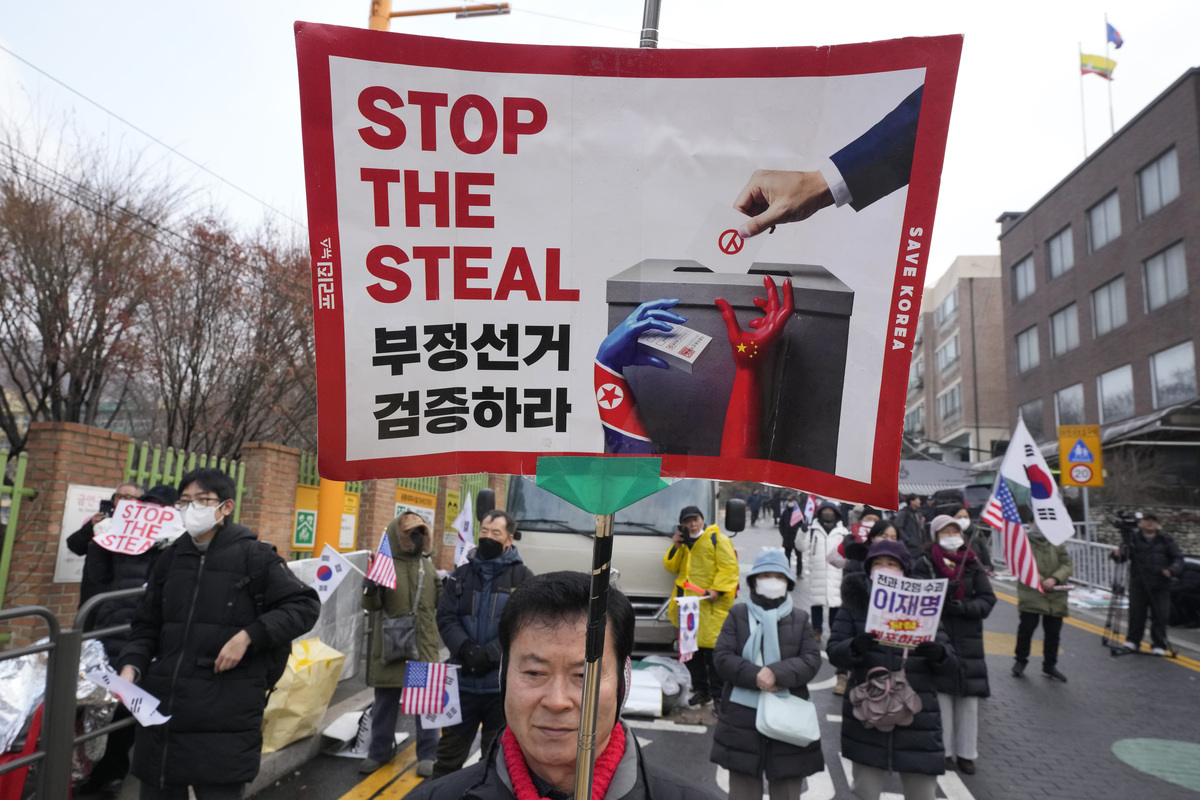Gwynne Dyer is a London-based independent journalist whose commentary is published in 45 countries.
Turning yourself from a democratically elected president into a dictator is a tricky operation, and most people who try it fail. It’s called a “self-coup,” from the Spanish “auto-golpe,” and to try it without first gaining the support of the armed forces is sheer lunacy. Yet, from time to time, an elected president tries to do exactly that.
The latest president to try it is South Korea’s Yoon Suk Yeol, elected two years ago by the slimmest margin ever. His declaration of martial law on Dec. 3 was withdrawn after three hours when thousands of civilians went to the National Assembly building and helped the lawmakers to get inside and vote to cancel President Yoon’s decree.
They tried to arrest him Saturday, but thousands of Yoon’s supporters formed a human chain to stop them. The head of the Presidential Security Service, Park Chong-jun (recently appointed by Yoon himself), also showed up at Yoon’s residence with his heavily armed paramilitary troops, vowing to resist to the death. So the police chose to withdraw.
This was not a blunder or a failure of nerve by the court’s investigators. It was a sensible decision not to give Yoon the spectacle of 3,000 armed police clashing with his own civilian backers and hundreds of armed presidential guards. I suspect it will take a little longer to get Yoon into handcuffs, but at the end of it he will no longer be president.
The “martyrdom” of another president who tried and failed to carry out a self-coup is just beginning. Last month, Brazilian ex-President Jair Bolsonaro and 36 former associates were indicted by Brazil’s federal police for plotting to assassinate the victor in the 2022 election, President Luiz Inácio Lula da Silva, and put Bolsonaro back in office.
What makes these two events relevant to the present is that Bolsonaro and Yoon modeled their behavior on Donald Trump’s. Yoon’s supporters in the confrontation outside the presidential residence last week were even waving American flags, to show that they were emulating Trump’s supporters in their attack on the U.S. Congress on Jan. 6, 2021.
Like Trump again, both men justified their illegal actions with the false claim that the previous election had been rigged against their side. But there was one big difference: Unlike Trump, they didn’t chicken out at the last moment. Stupid, but brave.
In any coup attempt, there is a point at which mere talk crosses the line into irrevocable action, and it is a bright red line. To bring people with you in sufficient numbers, you have to cross that line and risk everything. Yoon and Bolsonaro crossed it, and failed anyway. Trump never crossed it.
The key moment was on Jan. 6 four years ago when Trump, having seemingly promised to join the potential rioters and insurrectionists in front of the Capitol building, let himself be driven back to the White House after a reported brief token attempt to seize the steering wheel from the Secret Service driver. He watched the potential coup fizzle out on television.
Four years later, having won reelection fair and square, Trump is heading back into the White House. If even half of his promises are kept, there will be plenty of conflicts and crises between his administration on one side, and federal law, the U.S. Constitution and the strongly held values of around half the population on the other.
Trump’s control of the Supreme Court will let him ride out some of the protests, but it is likely that there will be grave confrontations between Trump and a large section of the American people. It is, therefore, some consolation that he lacks the courage and determination of a genuine revolutionary.
He talks a great fight, but when it came to the crisis point in 2021, he went tamely back to the White House. The rational explanation was that he could not count on the U.S. military to accept a Trump coup (which is probably still the case), but the real reason likely was that he didn’t have the guts to stage a coup.
That’s no guarantee that next time won’t be different, but 78-year-old leopards don’t usually change their spots.
